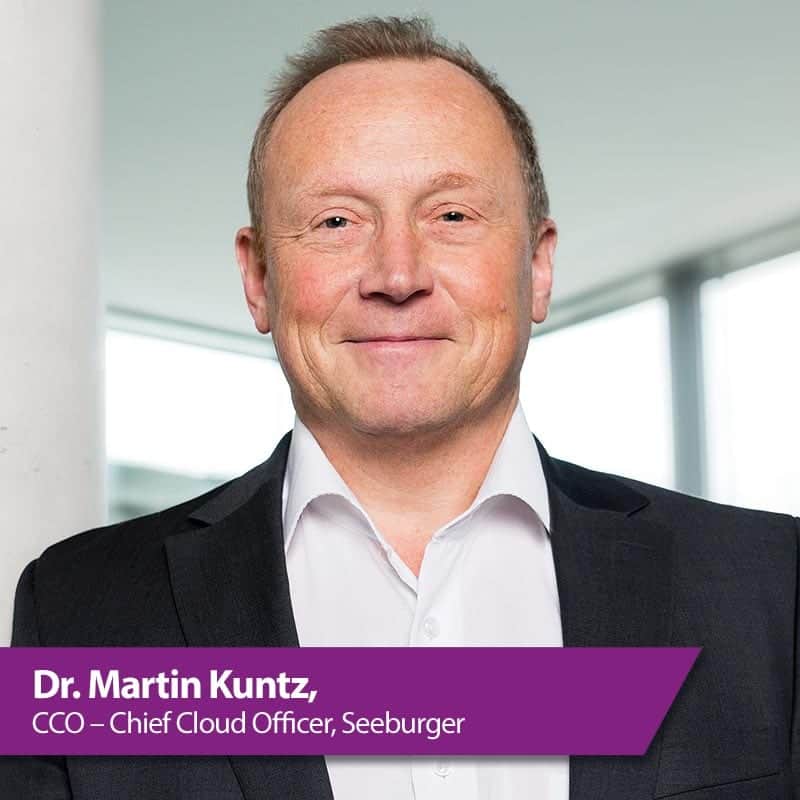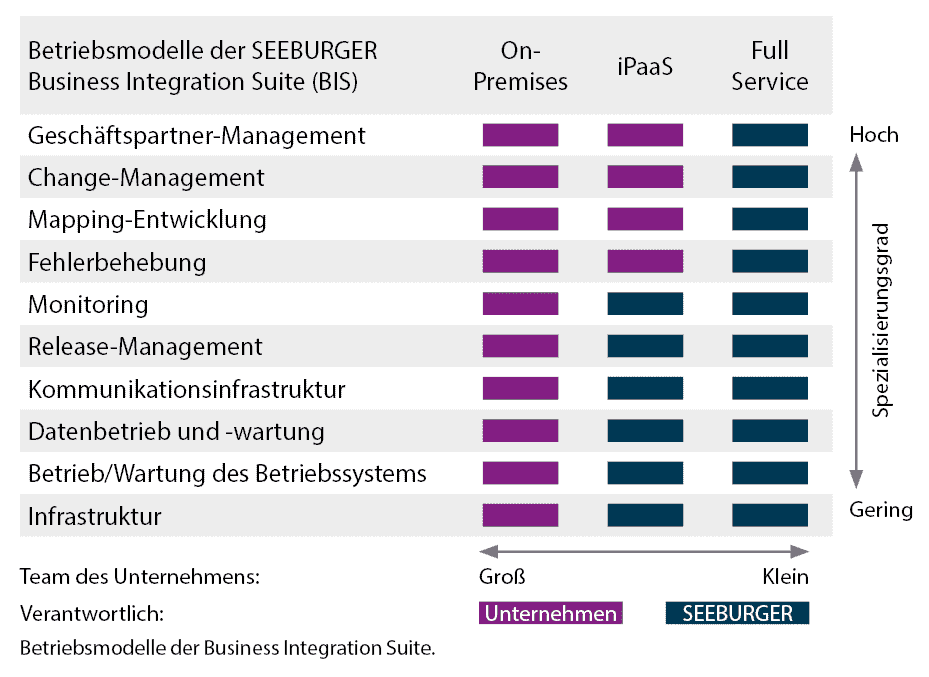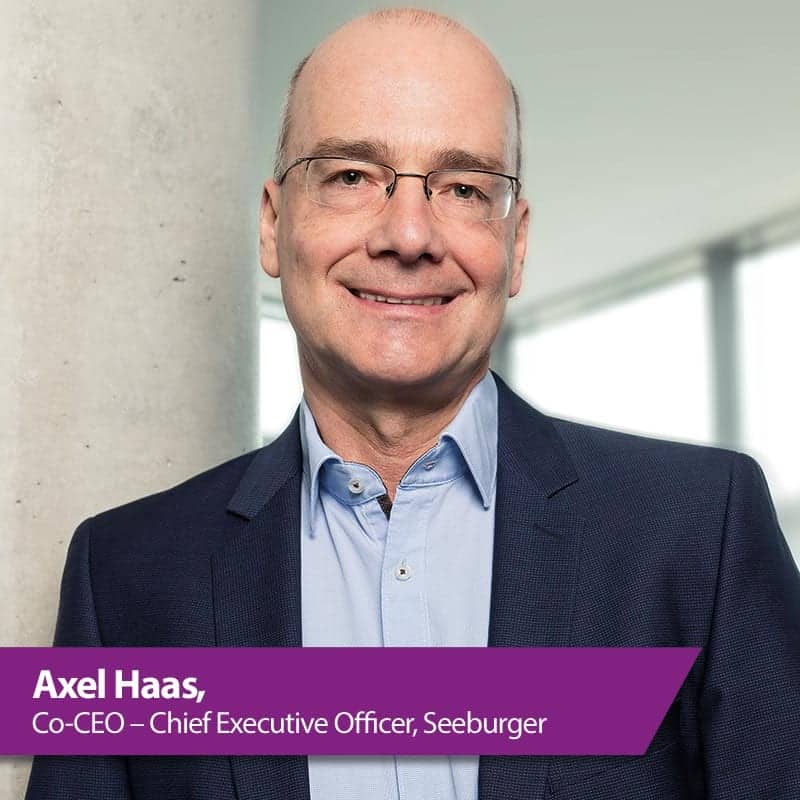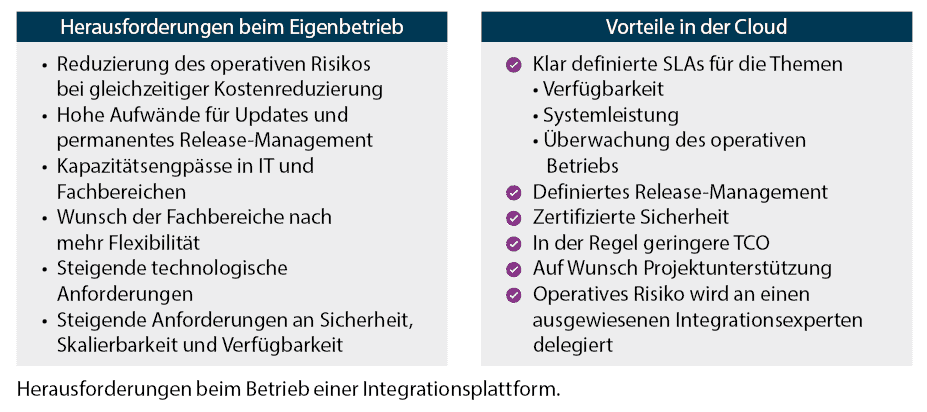iPaaS Is a Choice Rather Than an Obligation
![[shutterstock.com: 1368993110, Blue Andy]](https://e3mag.com/wp-content/uploads/2020/03/shutterstock-1368993110.jpg)

According to Gartner, the technologies, processes and competencies needed to operate an integration platform are numerous and complex. Gartner coined the term hybrid integration platform (HIP). Many companies are not equipped to operate a HIP on their own, and for them, handing operation over to a professional cloud provider would be the better option—enter iPaaS.
By booking an iPaaS cloud service, they can decide if and how they want to be part of the operation of the integration platform. Opting for a professional cloud provider makes operating a HIP a choice rather than an obligation.
Gartner also coined the term iPaaS, meaning Integration Platform as a Service. The terminology has been around for a while—since 2011, to be exact—but it was only recently that it became a technology trend—though not all companies seem to understand the concept.
The idea is simple, since businesses are already familiar with integration platforms, such as CRM and ERP connectors. iPaaS is simply operating them in the cloud to facilitate integration with cloud services and software-as-a-service (SaaS) applications.
Instead of using local servers and performing data synchronization between business applications, iPaaS allows companies to host their Internet accessible interfaces in the cloud where external iPaaS providers implement and maintain them. It doesn’t matter whether they are local applications or cloud-based SaaS applications – all kinds of business applications can be integrated in the same iPaaS platform.
Furthermore, companies do not have to implement or maintain any hardware or middleware themselves.

iPaas: middleware as a service
For this reason, iPaaS is also often called middleware as a service. As a cloud-based platform, iPaaS combines data and application integration and, if needed, combines different cloud models into one hybrid cloud model. Consequently, iPaaS fulfills its primary task of providing a clean, consistent platform for integration and use of different cloud services. Application programming interfaces (APIs) play a central role in the integration process. They provide the interfaces to the different cloud services and therefore have to be a staple in any iPaaS solution.
iPaaS enables a company’s numerous services and applications – whether they are on-premises or in the cloud – to work together seamlessly and remain easily scalable. However, a successful long-term integration strategy has to consider more than just technology.
Gartner has been observing the market for years and found that a company’s different departments are increasingly taking cloud-based integration processes into their own hands. This trend is accelerated by the growing number of available SaaS solutions that address a department’s specific problems, their relatively intuitive handling, and easy access to development and organizational resources.

However, this can only be true for simpler integration initiatives,. If the technological complexity is higher, as is often the case with B2B integration scenarios, then the IT department and skilled experts are called upon. Companies usually only have limited IT budgets though, and skilled experts are becoming increasingly scarcer – which is why some businesses are rightfully worried about their livelihood.
iPaas based on Seeburger's BIS
Providers of hybrid integration platforms offer relief, since they do not only offer the right technology but also skilled personnel. For example, Seeburger provides companies with an iPaaS solution based on the tried-and-tested Seeburger Business Integration Suite (BIS) as well as qualified experts.
Seeburger offers its Business Integration Suite (BIS) based on a one platform strategy as a HIP-based solution platform with various operating models—making it the only company on the integration platform market to do so.
If desired, this can even go so far as to completely take over the operation of the cloud-based integration platform and customers only have monitoring access to the platform. Seeburger offers the Business Integration Suite (BIS) on the basis of a "One Platform Strategy" as a HIP-compliant solution platform in several operating models, which is unique in the integration environment.
Depending on their requirements for security, availability and flexibility, the needs and wishes of different departments as well as their overall IT strategy, companies can choose between the following operating models for Seeburger’s Business Integration Suite.
The right operating model for every requirement
On-premises. The company operates BIS themselves, with their own team, their own hardware, in their own datacenter or in a private infrastructure cloud, such as AWS, Azure or Google Cloud Platform (GCP). Upon request, the Seeburger service team offers remote support for operating the BIS platform, for monitoring or troubleshooting, through the Remote Management Service.
iPaaS. This is the preferred operating model of companies who, on the one hand, want to maintain control and develop processes, mappings and configurations themselves, but on the other hand, do not want to bog their team down with time-consuming technological tasks. These companies usually want high availability, with Business Integration Suite securely operated in the cloud.
Full service. This model is ideal for companies who want to operate their integration platform in the cloud without using any of their own corporate resources – typically small to mid-sized companies. Seeburger takes care of all integration tasks so that companies can focus on their core business.

Companies can choose a combination of all aforementioned possibilities. Seeburger offers a complete service for tasks in a private cloud or as public cloud service. In a hybrid model, Seeburger and customers decide on a case-by-case basis how an integration task should be handled based on security, data protection, efficiency and usefulness.
Companies can also opt for a combination of the above options. Seeburger offers a complete service for tasks from a private cloud or as a public cloud service. In a hybrid model, each integration task is solved where it makes the most sense, namely in terms of security, data protection, efficiency and the best benefit for the team.
iPaaS customers can also decide who should be responsible for what. At the beginning of the partnership, iPaaS customers and Seeburger work out the details together in a workshop, answering questions like who should fulfill which tasks and who should be notified in which situation through which information channel. Seeburger usually takes care of monitoring and troubleshooting.
With 30 years of experience in the area of integration and more than 15 years of cloud experience, Seeburger’s cloud team supports iPaaS customers in creating a consistent structure when migrating their existing integration landscapes to an iPaaS platform. No company starts from scratch, after all; every single one has legacy systems, documents and data that have to be migrated.

Seeburger supports companies with comprehensive training and a number of various preconfigured content (processes, mappings, cloud interfaces).
Furthermore, customers benefit from a multitude of existing and immediately usable cloud services and SAP addons which facilitate a quick migration and implementation.
Generally, iPaaS customers work with a provided staging client (a separate, pre-production environment) where they can implement changes and then transfer them to their productive client (which is similar to SAP’s approach).
Seeburger offers its cloud services in six datacenters in Germany, the U.S. and China with maximum availability and the highest security and performance requirements (active/active architecture, release management, disaster recovery).
PDF in English

Why iPaaS?
Because integration has become extremely difficult and the rapid growth and acceptance of cloud services is bringing about significant changes. Because with iPaaS, IT departments can still carry out the integration themselves. However, this is becoming increasingly costly in terms of resources and time. It is often more time-saving and efficient to commission an external iPaaS provider with this task. iPaaS can be scaled according to requirements and supports real-time integration. The highlight: by using a consistent structure for integration, there is no need to start from scratch every time a new service needs to be integrated. As the entire platform management is carried out in a single tool, the time and effort required for integrations and IT costs can be reduced.






